Our children are priceless. There’s literally nothing most parents won’t do to ensure their health and safety. Mitigating risks to your kids and grandkids should be high on your priority list. This includes the time they spend at school. After all, while schools remain largely safe across America, nobody wants their kids’ school to become the next Uvalde or Marjory Stoneman-Douglas.
At the same time, a lot of folks don’t know what to look for in terms of good safety and security practices at school. Other parents have concerns about how to raise those questions without looking like a crackpot…or worse.
About the time I wrote “It’s time to hold your school officials accountable for security” a couple of months ago, I did my own “holding them accountable” as my twin boys started pre-K this year. I’m sharing this to help provide readers with a template that worked well in my case. Your district might be a different story.
My trail began with a short email to my kids’ principal. I asked for a sit-down to talk about security policies and procedures, “to make sure security here is a little deeper than locked doors and a subscription to the RAPTOR program.” RAPTOR provides a service to scan and track visitors as well as screening for sex offenders and non-custodial parents.
I invited others, including a school resource officer, to sit in with us.
The principal punted it to the district’s Director of Safety and Security, Rich Hirsch. On one hand, learning that our schools had a “Director of Safety and Security” impressed me. On the other hand, I’m old enough to know that bureaucracies sometimes have glorified paper pushers in important positions.
Instead of a bureaucrat, though, I found a retired cop with over a decade’s experience as a school resource officer in the Bloomington, Illinois schools. He lives and breathes his work. Like me, he’s a training junkie, always learning new skills and techniques.

As a cop, he’s worn many hats from K-9 cop to SRO. He’s also an instructor in best practices countering “active shooters.”
In our first phone call, we talked for easily half an hour, sharing some laughs and stories. We quickly found ourselves singing from the same hymnal.
He’s a go-getter, almost obsessed with school security and I learned why. Years ago, when he worked as an SRO, he got a call of “shots fired, unknown injuries” at his own kids’ high school.
“My mind sort of went blank as my training took over. I didn’t know if my kid was alive or dead,” he told me in that first phone call. They didn’t set up a perimeter, a la Stoneman-Douglas or Uvalde. They charged in with rifles, intent on taking out the bad guy with a gun.
Fortunately, a courageous teacher saw an opportunity after the first few “warm-up shots” and took down the would-be spree killer before anyone was hit, not too long before police arrived.
Fast forward a few weeks: Everyone I’ve met in the schools since that initial conversation has nothing but rave reviews for the guy. So I invited him to speak at a Guns Save Life meeting to help educate people on doing cursory evaluations, as lay people, of their kids’ schools.
Mr. Hirsch cheerfully accepted the invitation and the crowd of close to one hundred loved the presentation.
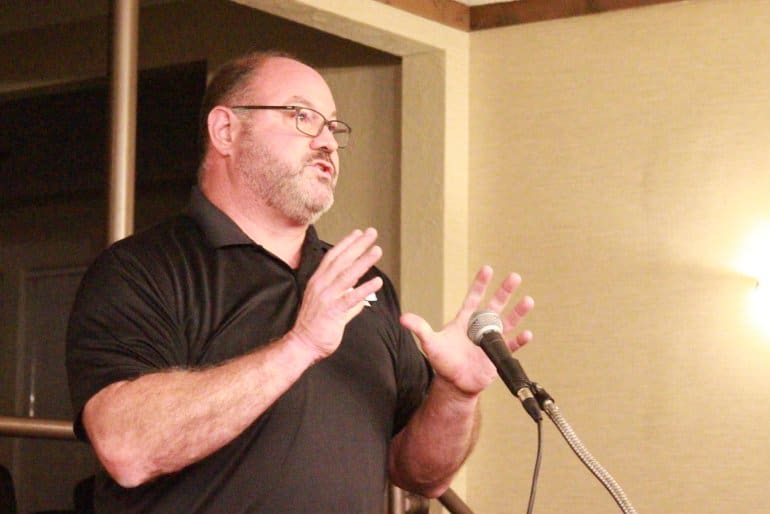
He began by introducing himself and explained how the incident of shots fired at his son’s school was a turning point in his career. He went from a conscientious SRO to a hard-charger, obsessed with learning all he could about active shooter response along with the best practices for securing schools to prevent future incidents and attacks.
He admits that not every district is like Bloomington’s. The SROs working in “his” schools aren’t “retired, on duty.” Far from it. Instead, they’re hard-charging SWAT officers who train folks both formally and informally on how to counter active killers. Hirsch contrasted them with school resource cops who don’t take the job seriously.
Even worse than that, some districts such as one just an hour down the road in Champaign (home of the University of Illinois) have actually paused their SRO programs because of a shortage of officers in the local department.
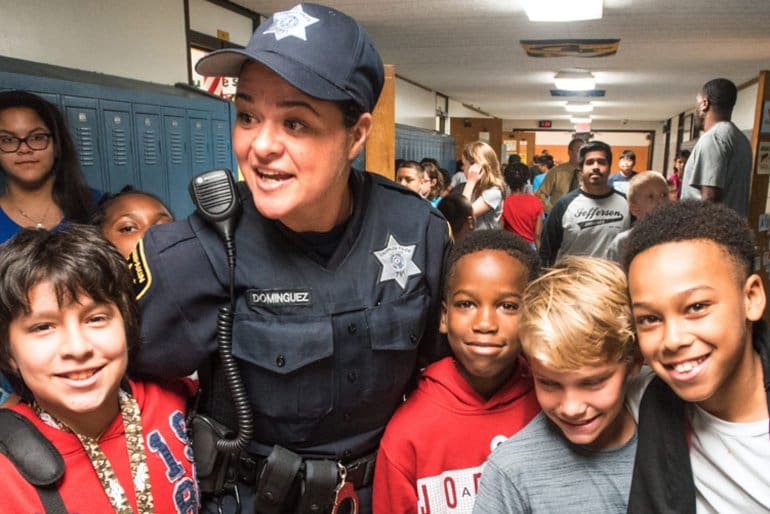
That’s right, Champaign, a city about six times larger than Uvalde, has no officers in its schools now. Suffice it to say I’m very pleased I moved to Bloomington from Champaign.
Rich indicated how he works every day to inculcate his enthusiasm for safety and security to teachers and staff. He encourages them to trust their instincts and to report anything suspicious. “If you see something, tell someone!”
As a former SRO and in his new position, he sang the praises of these police officers in the schools. He touted the relationships good ones build with the students as a friend, role model, and oftentimes a father figure to many.
As for meeting his “long lost brother” in some guy by the name of Boch, now a parent of a couple of District 87 students, Hirsch said he welcomes a responsible good guy outside that school during dismissal time. “Thank God he’s there,” Rich said.
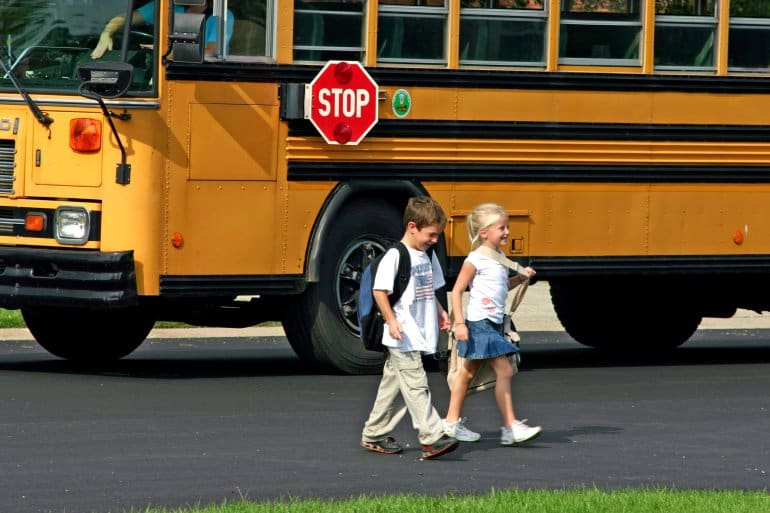
He admitted that a vulnerability, shared by so many school districts, involves buses. Especially buses full of kids. He’s working on providing some training for bus drivers in mitigating risks and reacting to an attempted attack on a bus or an attempted abduction.
Parents’ & Grandparents’ role: How to approach school administrators
As part of his presentation, he discussed how parents and grandparents can do their own evaluation of security where their kids and/or grandkids attend school. The number one thing to look for: are all of the entrances locked?
Locked exterior doors with controlled access is the single best way to protect kids in schools.
Go early and watch the little things before school or at dismissal time. Little things add up to make a big difference. If you see doors propped open or unlocked, contact the school administration.
Look for other obvious security failings like allowing random people free access to school buildings, perhaps through service doors (especially if those walking in can carry things like backpacks, or containers that a long gun would fit in). Contact the school administration right away to remedy these issues. Ditto if you observe suspicious behavior. Be polite and courteous, but make the call.
If the school administration isn’t responsive, contact the superintendent. Explain what’s going on and ask for a sit-down meeting with or without your principal.
If that fails, visit the school board and talk at the public comments period. If done tactfully and respectfully, that will sometimes spur action.
After all, school shootings and mass casualty incidents are on everyone’s mind right now. No sane school district administrator or school board is going to risk the publicity and potential liability of ignoring requests for security shortcomings to be remedied.
Locally, Hirsch says some of the things they do include parking a police squad car in a prominent location outside the junior high and high schools. They also have conspicuous signs saying that armed police are present, along with overt, easy-to-spot cameras.
Entry is limited to a single location with an intercom system for entry and, of course, self-locking doors. They also screen visitors against sex offender databases using RAPTOR.
Even if you visit your kids’ school and don’t see shortcomings, you can still contact the school principal with some proactive questions about the protocols and policies in effect. Ask for a meeting to discuss them. If nothing else, it will let them know that at least some parents are watching and engaged.
Here are some questions you can ask ahead of your meeting, so they have an idea of what you’re looking for and so they can prepare accordingly. And yes, you get to “grade” their responses.
1. Has our school ever had a vulnerability assessment done?
2. Does our school work with local law enforcement and emergency responders in crisis planning and training? How recently?
3. When was our emergency operations/crisis management plan last reviewed?
4. What types of drills are conducted at our school and at what frequency?
5. Are all exterior doors of our school locked during instructional hours? Are classroom doors locked during instructional hours?
6. Are all visitors to our school required to check in with the main office?
7. Are students and staff trained on how to identify and report suspicious or concerning behaviors/comments?
8. Does our school have a behavioral threat assessment team?
9. If there is an emergency, how and when are parents notified?
10. Do we have designated security personnel assigned to our school? If so, are they armed/unarmed?
11. Do our bus drivers have training on what to do in emergencies, including active shooter incidents or attempted abductions?
12. This one is state-dependent: In more and more states (but certainly not Illinois), schools allow for armed staff members. If your state allows it, you might also ask about whether the school district permits armed staff to carry. (Uvalde Schools, for instance, still has a “no guns” policy despite Texas law allowing armed school staffers to carry.)
If your local schools don’t have an SRO, advocate for one to the administrators, the school board, and local government.
By the same token, if your kids’ school has a school resource officer who isn’t proactive, or has one foot out the door waiting for retirement, contact the police chief and have a meeting to share your concerns.
Believe it or not, there are still schools that don’t secure entrances during school hours. Or they have other vulnerabilities that could be remedied for next to nothing in terms of expenditures.
Safety and security protocols work in real life
Taking steps to mitigate risks isn’t some untested theory. They make a difference and they work. In fact, earlier this school year, a shooting at a St. Louis high school showed how taking security seriously and best practices greatly mitigates threats. And in a worst-case scenario, they limited the carnage.
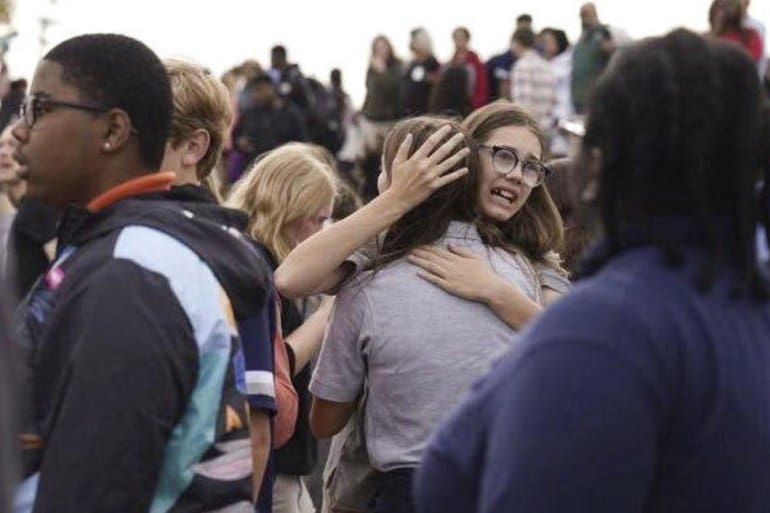
From CBS News . . .
A woman and a teenage girl were killed Monday morning in a shooting inside a St. Louis high school, authorities said. The gunman was also killed in the shooting, police said, and six others were taken to hospitals with injuries…
Schools Superintendent Kelvin Adams said seven security guards were in the school at the time, each at an entry point of the locked building. One of the guards noticed the man was trying to get in at a locked door, but couldn’t. The guard notified school officials and ensured that police were contacted, Sack said.
“It was that timely response by that security officer, the fact that the door did cause pause for the suspect, that bought us some time,” Sack said.
Evaluate your kids’ school for obvious vulnerabilities. Contact school administrators if you see vulnerabilities or deficiencies. In fact, contact them even if you don’t see any problems to get a good handle on how serious they take safety and security. Let them know it’s important to you and that you’re paying attention.
Because once again, one of the lives you save might be that of your own son or daughter.

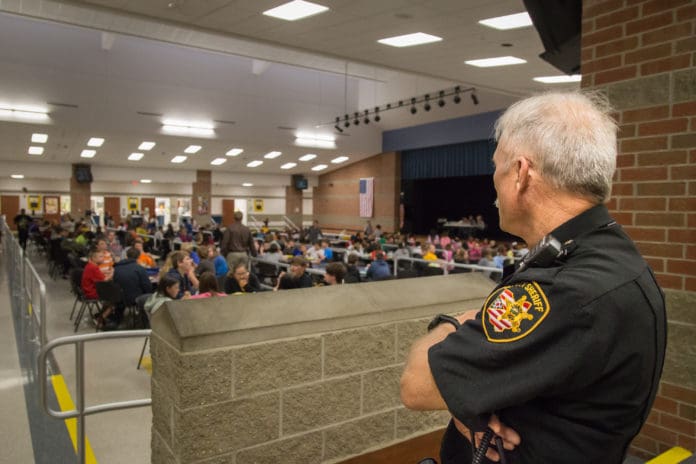



The next school shooter is already known to law enforcement. They will ignore flashing warning signs until he goes off. And then they will attempt to disarm all the folks that did not do it.
jwm, the subject being known to LE is of little use when you take your concerns to school administrators early on and they squash it. Case in point. I’m the SRO at a large middle school. There are also two armed private security guards on campus. One is a sergeant with the DOC in his other life. It was a rough middle school. We had students that could vote. If they hadn’t been convicted felons. Anyway, there’s Rachel. Rachel was a 15 y.o. B/F. And trouble. When you spoke with her you would think she was a 20 y.o. B/M. I warned the principal, multiple times, that something serious was going to happen. I was ignored. Then something serious happened. Rachel attacked a staff member. The teacher was bruised and sore, but nothing serious. I arrested her. The principal insisted I release her and bullied the teacher into not pressing charges. Okay. Rachel was constantly threatening to “go home and get my gun and come back to kill all you motherfuckers.” She boards a school bus and leaves. I stayed late that day. Soon enough dispatch calls me. A parent reported that Rachel had shown her children a handgun and that she was riding her bike back to campus. I issued a BOLO. Another deputy had seen her a few minutes earlier. We located her and I recovered a loaded Ruger P series 9mm. Stolen out of Tampa. This time the principal couldn’t help Rachel. When I told the principal what had happened, and laid the pistol on her desk (unloaded, sealed in an evidence bag), she said, “That doesn’t mean she was coming back here.” I told Mrs F that Rachel would be involved in a homicide before she was 21. About two years later Rachel set up her uncle to be killed by her boyfriend. He was shot in the chest with a .270 Winchester. Rachel had knocked on the door then stepped aside so her boyfriend had a clear line of sight. Point is, there are lots of opportunities for lots of people to drop the ball. Not just LE. I don’t know what else I could have done. Oh, when my captain got wind of what happened he took me and the Ruger to the Dr. Henderson’s office. School Board Superintendent. After a “respectful” period of time the principal retired.
That evil bastard at Marjorie Stoneman Douglas was known to LE and school administrators but most importantly to the children at that school. If only the administrators and LE suffered the consequences instead of the children.
First thing that should have already been done…Hang the perp’s corpse in the US Congress so those knee jerk finger pointing congressional ratbassturds can see who to blame and cease blaming the NRA, Second Amendment, etc. They trip over each other to USE a horrendous tragedy to single out and attack Gun Owning Americans who had zip, nada, nothing to do with the crime. In fact those they blame would have stepped up and used deadly force to stop the perp.
And furthermore…Everyone of the surviving perps were sentenced to life when they deserved death…Talk about peeing on the graves of the victims a life sentence is peeing on the graves of the victims.
Gadsden,
Thank you for relating that those events. They give a clear example of the bleeding-heart, psychopathic incompetence pervasive in our public school systems
@Gadsden Flag
“… and bullied the teacher into not pressing charges”
That happens a lot in schools across the country, not only to teachers/staff but to parents and students also. So much that over 85% (about 38,000) violent assaults by students annually across the nation in grades 7 – 12 on teachers/staff/students with serious injury go unreported to police and are never prosecuted.
If violent assaults in schools go unreported, then obviously other things going on there go unreported as well.
.40, the principal doesn’t want any arrests on campus. Especially for violent crimes. Those numbers are followed. Looks bad at the school board meetings.
Great read! Learned a few things. Thank you, Jon!
Now, for a story on how we protect our children from the ped-oh-file (because, WordPress), jen-der confused, com-mun-ist, and imbecilic teachers and school administrators.
But that is a different blog.
That is why we home schooled.
Schools are merely a helping hand. The real culprit spreading that social contagion is social media.
Thank you John for this article. I have a nephew that will be attending Pre K in a couple of years and this info is invaluable. I am also glad that you have an outstanding RSO.
I meant to say Director of Safety and Security, Rich Hirsch.
If you really want to protect your kids,
Get them OUT of the public school system.
You go through all the details and checks as if you were describong security at some prison facility. When I attended grade and high school, and even university, NONE OF THIS was ever even considered. We all would have rebelled against this level of security and suspicion, The ONLY doors I ever remember being locked during the whole day was once in a while when a private meeting was going on involvong either the principal or the dean of discipline that needed to be private. Happened maybe half a dozen times in the twelve years I had pre-college. Whenever a door was closed we knew to knock politely if we wanted to speak with whoever was in that office. The door was almost nevre locked. Most times those doors were wide open.
I cannot imagine the paranoia that would have come with the prison mentality you describe. This is a grevious indictment of the long fall from decencly that has come over our culture.
The Further our society gets from the parenting and educational philosophies of the 50’s,60’s and 70’s. The Farther down the Rabbit Hole of societal chaos Our nation gets. The Modern Liberalism philosophy on raising and educating children is directly responsible for the rampant crime and murder rates being witnessed on a daily basis. Especially among school age children and adults under 30. Until values, morals, and ethics once again become a standard in raising and educating children. The chaos will only continue to destroy the very fabric of our society.
There are no, morals or ethics anymore and never will be.
Values?, send the kid to school and day care so mom and pop can both work to pay off the new car, big screen, and lap top.
“This is a grevious indictment of the long fall from decencly that has come over our culture.”
True Tionico,
But I have heard idiots like Don Lemonhead say things like “Do you want our schools to look like prisons?” Well if it saves just one life isn’t it worth it? As they always say. Not directed at you Tionico but Lemonhead himself since I know he peruses this site everyday. He goes by dacian.
Don dacian ‘its better to let the kids die than let an armed teacher stop a shooter’ Lemonhead …..
Glad I’m not the only guy me who had that thought. Sure, let’s get our kids totally accustomed to heavy restrictions on movement enforced by armed guards, all to protect against something that’s marginally more likely than getting struck by lightning?
Jesus Christ. And we’ve people who supposedly advocate for the concepts of liberty pushing this crap? Forget all this nanny state “papers please” authoritarian crap, literally the only thing needed to harden schools is allowing teachers to arm themselves and ensuring (or possibly requiring if it’s not done voluntarily in sufficient numbers) a minimum ratio of teachers on site are armed and trained.
We don’t need bored cops stuck on guard duty and then looking for reasons to arrest students, we don’t need kids getting used to movement restrictions, we *certainly* don’t need to reinforce an impression among students that mass shootings happen everyday, we don’t need to add trillions to the national deficit by hardening every school building….
I’d you claim to be concerned about school security and your first, second, and third questions aren’t about armed teachers, you’re either a liar or a moron
BE a school admin, part of the school board, a superintendent, a principle, or an armed teacher.
When you see the options on the ballot on election day, don’t just blow them off. Be deliberate about who you vote for. KNOW who your voting for. Pay attention when they say they need more money for something.
Be an Active participant in your child’s school environment. Gone are the days when you could trust the school board and teaching staff to educate and protect your child. Just like in society with Criminal Justice Reform allowing criminals to continue to prey on innocent citizens, Schools are turning a blind eye to the criminals in the school system. That prey on your children.
Schools been blown to pieces
The best quick fix is get rid of the “GUN FREE” zones.
Good report Boch! My granddaughters are home schooled. My 4 sons(2 extremely different mother’s!) are long grown. It was starting to get “woke” & stupid when my youngest at 27 was still in HS. They had some mean armed SRO dudes who did a Yeoman’s job!
We are getting active about security in my grandsons education. We are homeschooling where indoctrination, killers and sexual predators will have a much tougher time getting to him.
The Problem can’t fix the problem. Figure it out
John Boch, all of your recommendations still don’t solve the problem. The problem is how do I keep my children safe in an educational environment? Even after you do all of your recommendations in this article your children will still be subject to poor educational practices and a lack of security. The only way to keep your children safe and give them a good education is to homeschool them. There may have been a time in this country’s history where public education was okay. That time has passed. The only way to make the system better is to vacate the system. When the government sees a mass exodus from their system they might consider fixing it. I wouldn’t hold my breath on that one. ask Robert Farago about it. I think I convinced him to homeschool his daughter and that’s why he left this blog.
Public schools have become stupid places at stupid times with stupid people doing stupid things. It’s time to to cut our losses and do what the government won’t do.
Jesus, think about what you’re saying before you post.
WHat does it say about AMERICA when you have to,have [and in one of your quoted cases SEVEN ARMRED GUARDS on the school premises armed guards on shool premises and you can still call America the ‘HOME OF THE FREE’ I have four schools three Junior one Middle and one COMPREHENSIVE within two miles of wher I am now siting. THe Comprhensive School has a POLICE COMMUNITY SUPPORT OFFICE [PCSO are Communit Support Officers that assist the Police which I understand is manned on a casual basis because it just so happens to be in the phyisically middles of the Local Police Remit Area] Neither they nor the Regular Police are Armed. I am n0 84 yeasrs old and I can honestly sayn that in those 84 years I have only heard of twoor three Criminal Firearms incidences and all three involved shotguns . Two where a husbands shot their wives and one when a local post office was held up. I the latter case a coupole of compltete idiots had somehow managed to rob a l,ocal Stately Home od a CASED PAIR of HOLLAND and HOLLAND 12 Gauge worth at least £GB50,000 even on the illegal market > The idiots cut who them down to ‘sawn-off’s held up a POST OFFICE with a time locked safe, got away with £200 in a car driven by a 17 year old girl with a learners license who ha only ever driven solo around the ASDA [UK-WALMART] in EASTBOURNE and then crashed it!! Some master criminal minds or what??
@Albert L J Hall
“WHat does it say about AMERICA when you have to,have [and in one of your quoted cases SEVEN ARMRED GUARDS on the school premises armed guards on shool premises and you can still call America the ‘HOME OF THE FREE’ I have four schools three Junior one Middle and one COMPREHENSIVE within two miles of wher I am now siting. ”
It says we are smarter than the British pretending it can’t happen.
In the past Principals would expel troublemakers. And before mandatory attendance laws extended to age 18 the troublemakers would happily expel themselves.
Expulsion, if only to alternative (containment) schools needs to brought back for those who are violent or disrupt the learning of others.
In my 95% white, upper middle class, suburban, blue school district, the board voted to remove all SROs from all school property for all school functions because a few kids reportedly said seeing the police made them afraid they would be attacked by police. Leftists in charge makes it a dangerous place.
Some Teachers and Staff at my Grandkids’ school are trained and armed. Advantages of a Consolidated Rural School.
Good article. Thanks john. And Gadsden Flag, as you may know Parkland was the same situation. The principle, vice-principle, and superintendent did every thing they could to keep the shooter out of jail despite multiple warming signs. ‘Why Meadow Died’ is a good book that details all the things the shooter did over the years leading up to the shooting.
Comments are closed.